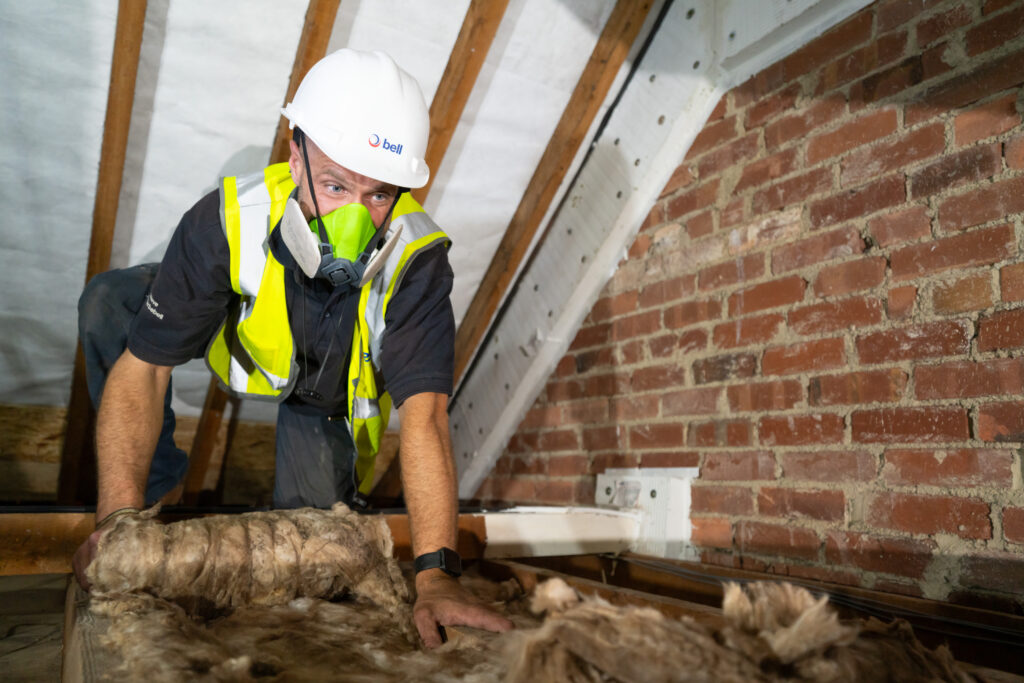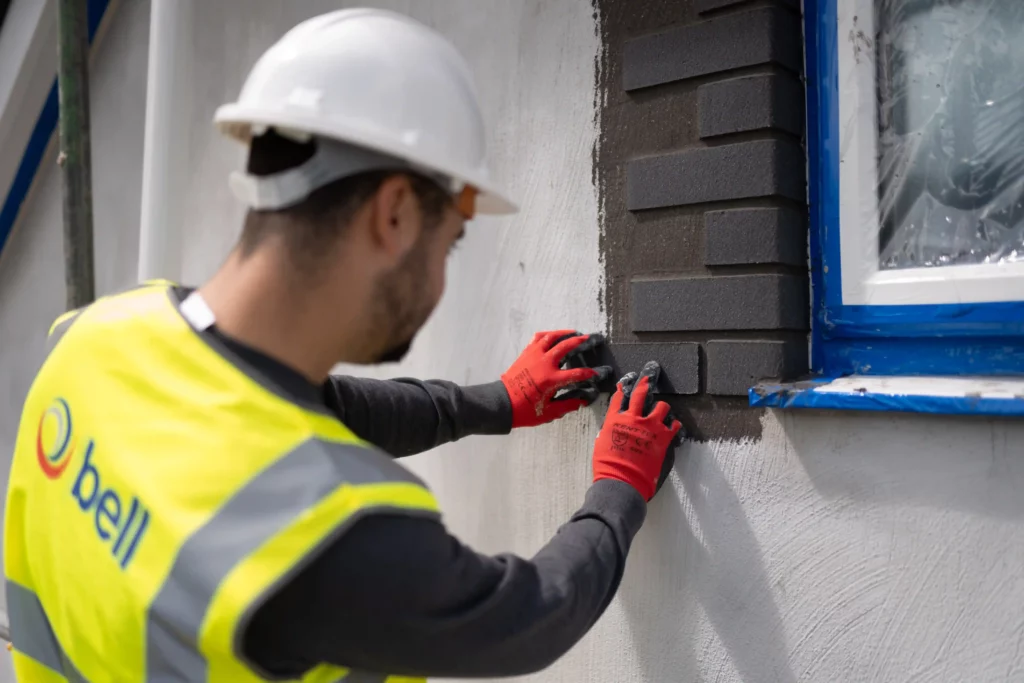Housing Disrepair: Restoring Homes and Lives
Housing disrepair poses significant risks to tenant well-being, property values, and community stability. Neglected homes can lead to health issues, safety hazards, and a decline in neighbourhood pride.
Without timely intervention, these problems can escalate, leaving tenants vulnerable and communities fragmented. Unresolved disrepair not only affects residents but also discourages investment and fosters long-term neglect.
Bell is a trusted partner in tackling housing disrepair across the UK. With a commitment to restoring homes to safe, habitable conditions, Bell ensures that properties are well-maintained, compliant with regulations, and contribute to the overall health and cohesion of the community.

The Impact of Housing Disrepair on Tenants and Communities
Housing disrepair significantly affects tenants’ quality of life and has wider implications for communities. Poor housing conditions can lead to health issues, emotional distress, and a breakdown of trust between tenants and housing providers. Unresolved disrepair can also contribute to neighbourhood decline, reducing property values and discouraging investment in local areas.
Health Risks of Housing Disrepair
Damp, mould, and poor ventilation are among the most common health hazards in homes suffering from disrepair. These conditions can lead to respiratory illnesses, allergies, and other health complications, especially for vulnerable groups such as children, the elderly, and those with pre-existing conditions. Inadequate heating and insulation exacerbate these problems, increasing the risk of illness during colder months.
A lack of proper ventilation can also lead to the accumulation of indoor air pollutants, further compromising tenant health. In extreme cases, house disrepair can create safety hazards, such as faulty electrical systems that pose fire risks or structural weaknesses that threaten the stability of the building.
Social & Emotional Effects
Living in a home that is in poor condition can have profound emotional and psychological consequences. Persistent damp, leaks, or structural issues can lead to chronic stress, anxiety, and even depression. Families may feel helpless and frustrated when repairs are delayed or ignored by landlords, leading to strained relationships between tenants and housing providers.
At a community level, neglected properties contribute to urban decay. When multiple homes suffer from disrepair, entire neighbourhoods can be affected. This decline in living standards can lead to lower community morale, reduced civic pride, and increased dissatisfaction with local authorities and landlords.
Economic Consequences of Housing Disrepair
Neglected properties not only diminish the quality of life for tenants but also have a financial impact on local economies. Poorly maintained housing can deter investment, reduce property values, and strain public health resources due to increased medical issues related to unsafe living conditions. Social landlords and private property owners who fail to address repairs in a timely manner may also face legal repercussions, resulting in significant financial penalties and reputational damage.

Common Housing Disrepair Issues
Disrepair can take many forms, each with its own set of consequences for tenants and communities. While some problems may seem minor initially, they can quickly escalate if left unaddressed.
1. Damp and Mould
Damp and mould are some of the most widespread issues for houses in disrepair, often caused by leaks, poor ventilation, and inadequate property maintenance. Prolonged damp can weaken walls, rot wood, and degrade plaster, leading to significant structural damage.
As previously said, mould spores in the air can trigger respiratory illnesses and allergies, making it a particular concern for vulnerable individuals. The presence of damp and mould also reduces the overall appeal of a property, potentially lowering its market value and making it less desirable for future tenants or buyers.
2. Structural and Safety Repairs
Cracks in walls, subsidence, and unstable foundations pose serious risks to tenant safety. Neglecting these issues can result in major structural failures, putting lives at risk and leading to costly emergency repairs. Damaged roofs, broken windows, and deteriorating exteriors leave homes exposed to weather extremes, accelerating the deterioration process.
When tenants are forced to live in structurally unsound homes, their sense of security is compromised. Moreover, poorly maintained properties contribute to an overall decline in community aesthetics, discouraging investment and development in the area.
3. Plumbing and Electrical Systems
Faulty plumbing can cause leaks, leading to water damage, damp, and further structural issues. Blocked drainage systems, broken pipes, and failing water pressure create daily inconveniences for tenants, making basic household activities such as cooking and cleaning difficult.
Outdated electrical systems are another common issue, with faulty wiring posing a major fire hazard. Non-compliance with modern safety standards increases the risk of accidents and electrical failures, making it critical for landlords and housing providers to address these issues promptly.

The Role of Housing Providers in Addressing Disrepair
Housing providers play a crucial role in ensuring that homes remain safe and habitable. Proactive maintenance strategies, timely repairs, and effective communication with tenants are essential for managing disrepair effectively.
Many social landlords and housing associations have implemented digital reporting tools that allow tenants to document disrepair issues quickly and efficiently. These systems help housing providers prioritise repairs, allocate resources effectively, and prevent minor issues from escalating into costly problems.
Bell’s Expertise in Social Housing Disrepair
Bell has a long-standing reputation as a leading partner for local councils and housing associations, offering tailored solutions to meet the unique challenges of social housing disrepair. With decades of experience, Bell ensures that all repair works comply with current regulations and industry best practices.
Why Bell?
- Proactive maintenance strategies: Bell takes a forward-thinking approach to housing disrepair, implementing preventive measures that address issues before they escalate.
- Strong partnerships: By collaborating closely with housing associations, Bell ensures that repair projects are completed efficiently, within budget, and to the highest standards.
- Transparency and communication: Regular progress updates ensure that tenants and clients are informed throughout the repair process, fostering trust and accountability.
- Expert housing disrepairs team: Bell employs highly skilled professionals who specialise in resolving disrepair issues quickly and effectively, minimising disruption to tenants.
The Benefits of Disrepair Works for Tenants and Communities
Timely and effective housing disrepair works improve lives and strengthen communities by creating safer and healthier living conditions.
Enhancing Tenant Safety and Well-Being
Ensuring homes are safe for residents starts with removing hazards such as exposed wiring, damaged flooring, and unstable structures. These risks can lead to serious accidents, making it crucial to address them promptly.
Other key improvements include:
- Enhancing energy efficiency: Upgrading insulation and heating systems helps lower energy costs, reducing fuel poverty and ensuring homes stay warm in winter.
- Improving indoor air quality: Fixing leaks and damp issues prevents mould growth and reduces the risk of respiratory problems, creating a healthier living environment.
Building Stronger Communities
A well-maintained home does more than provide a safe living space—it fosters a sense of pride within the community and encourages long-term tenancy. When residents feel secure and comfortable in their homes, they are more likely to stay, contributing to a stable and engaged neighbourhood.
Other key benefits include:
- Stronger tenant-landlord relationships: Addressing repairs promptly builds trust, reduces disputes, and minimises complaints.
- Boosting local investment: Well-kept properties attract further investment into the area, driving economic and social revitalisation.
Why Choose Bell for Your Housing Disrepair Needs
Housing disrepair is not just a matter of physical neglect; it has far-reaching effects on the health, safety, and well-being of tenants, as well as the broader community. By tackling disrepair issues such as damp, mould, structural problems, and faulty systems, housing providers and repair specialists like Bell play a vital role in creating safer, healthier living conditions. The work done to restore homes not only benefits individual tenants but also strengthens communities, improves local economies, and fosters positive relationships between landlords and tenants. Bell’s expertise in housing disrepair, combined with their proactive approach and strong partnerships, ensures that properties are not only brought up to code but also transformed into spaces that promote long-term well-being. By addressing issues before they escalate, Bell contributes to the preservation of property value and helps mitigate the broader impact of housing neglect.
FAQs About House Disrepairs Services
What is considered housing disrepair?
House disrepair includes issues like damp, mould, structural damage, and faulty plumbing or electrical systems. These problems can compromise safety, lead to health risks like respiratory issues, and make living conditions uncomfortable. Prompt action is needed to prevent further damage and protect tenant well-being.
How does Bell support housing associations with disrepair?
Bell provides tailored solutions for housing associations disrepair by addressing repairs, plumbing, electrical systems, and more. They ensure compliance with safety regulations, deliver high-quality repairs, and maintain timely communication with tenants, helping housing providers improve conditions and meet legal standards effectively.
Why is addressing housing disrepair important?
Addressing housing disrepair is vital for tenant health, safety, and comfort. It prevents further property damage, reduces long-term costs for housing providers, and ensures compliance with regulations, all while promoting a safe, habitable environment for tenants to thrive in.
How does Bell minimise disruption during repairs?
Bell minimises disruption by using efficient repair processes, maintaining clear communication with tenants, and scheduling work at convenient times. They ensure repairs are completed quickly, with minimal noise or mess, allowing residents to continue their daily routines with as little inconvenience as possible.
